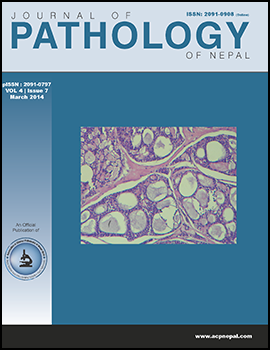Automated urinalysis: First experiences and comparison of automated urinalysis system and manual microscopy
DOI:
https://doi.org/10.3126/jpn.v4i7.10316Keywords:
Automated urinalysis, Urine microscopy, UF500iAbstract
Background: Urinary tract infection is a common condition which needs laboratory evaluation of urine to substantiate the clinical diagnosis and initiate treatment. The conventional urinalysis consists of using a test strip for chemical examination to identify the various urine sediments after which visual microscopy is done. We evaluate the analytical performance of automated microscopic technique (UF 500i) and compare results with those from manual microscopy.
Materials and Methods: A total of 382 urine specimens were collected during a period of one month out of which 128 samples which had abnormal cell counts were analyzed for cells and particles by manual and automated microscopy by UF-500i flow cytometer.
Results: The concordance of UF 500i and the manual microscopy which is considered to be the gold standard for urine microscopic examination was 90.6% for white blood cells, red blood cell, epithelial cells, cast and bacterial count.
Conclusion: Automated urine sediment analyzer, UF 500i was considered reliable in the measurement of white blood cells, red blood cells, epithelial cells, cast and bacteria. Automation will surely reduce the work load, increase accuracy and reliability, and increase the throughput and turn-around time of the laboratory
DOI: http://dx.doi.org/10.3126/jpn.v4i7.10316
Journal of Pathology of Nepal (2014) Vol. 4, 576-579
Downloads
Downloads
Published
How to Cite
Issue
Section
License
This license enables reusers to distribute, remix, adapt, and build upon the material in any medium or format, so long as attribution is given to the creator. The license allows for commercial use.




